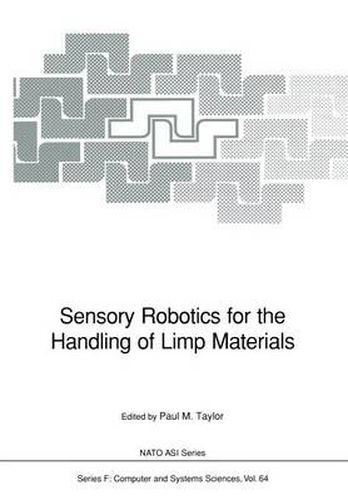Readings Newsletter
Become a Readings Member to make your shopping experience even easier.
Sign in or sign up for free!
You’re not far away from qualifying for FREE standard shipping within Australia
You’ve qualified for FREE standard shipping within Australia
The cart is loading…






This title is printed to order. This book may have been self-published. If so, we cannot guarantee the quality of the content. In the main most books will have gone through the editing process however some may not. We therefore suggest that you be aware of this before ordering this book. If in doubt check either the author or publisher’s details as we are unable to accept any returns unless they are faulty. Please contact us if you have any questions.
Limp materials are used in many economically impo~tant industries such as garment manufacture, shoe manufacture, aerospace (composites) and automobiles (seats and trim). The use of sensors is essential for reliable robotic handling of these materials, which are often based on naturally occurring substances such as cotton and leather. The materials are limp and have non-homogeneous mechanical properties which are often impossible to predict accurately. The applications are very demanding for vision and tactile sensing and signal processing, adaptive control systems, planning and systems integration. This book comprises the collection of papers presented at the NATO Advanced Research Workshop on ‘Sensory Robotics for the Handling of Limp Materials’, held in October 1988 at II Ciocco, Tuscany, Italy. The aim of the workshop was to examine the state of the art and determine what research is needed to provide the theoretical and technological tools for the successful application of sensory robotics to the handling of limp materials. The meeting also acted as the first-ever forum for the interchange of knowledge between applications-driven researchers and those researching into the provision of fundamental tools. The participants were drawn from academia (20), industry (5), and other non-university research organisations (5).
$9.00 standard shipping within Australia
FREE standard shipping within Australia for orders over $100.00
Express & International shipping calculated at checkout
This title is printed to order. This book may have been self-published. If so, we cannot guarantee the quality of the content. In the main most books will have gone through the editing process however some may not. We therefore suggest that you be aware of this before ordering this book. If in doubt check either the author or publisher’s details as we are unable to accept any returns unless they are faulty. Please contact us if you have any questions.
Limp materials are used in many economically impo~tant industries such as garment manufacture, shoe manufacture, aerospace (composites) and automobiles (seats and trim). The use of sensors is essential for reliable robotic handling of these materials, which are often based on naturally occurring substances such as cotton and leather. The materials are limp and have non-homogeneous mechanical properties which are often impossible to predict accurately. The applications are very demanding for vision and tactile sensing and signal processing, adaptive control systems, planning and systems integration. This book comprises the collection of papers presented at the NATO Advanced Research Workshop on ‘Sensory Robotics for the Handling of Limp Materials’, held in October 1988 at II Ciocco, Tuscany, Italy. The aim of the workshop was to examine the state of the art and determine what research is needed to provide the theoretical and technological tools for the successful application of sensory robotics to the handling of limp materials. The meeting also acted as the first-ever forum for the interchange of knowledge between applications-driven researchers and those researching into the provision of fundamental tools. The participants were drawn from academia (20), industry (5), and other non-university research organisations (5).